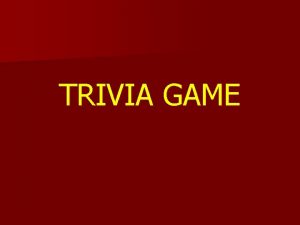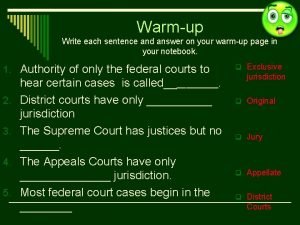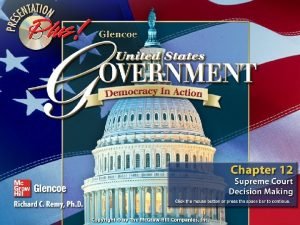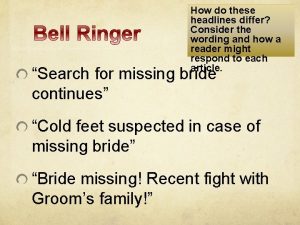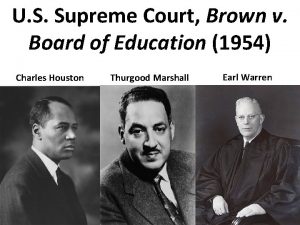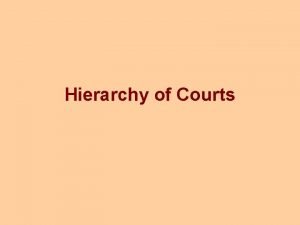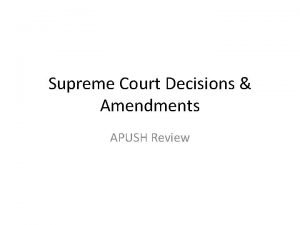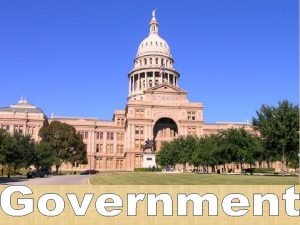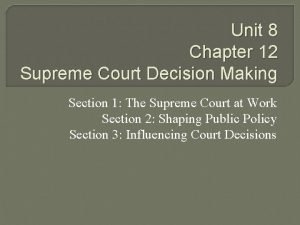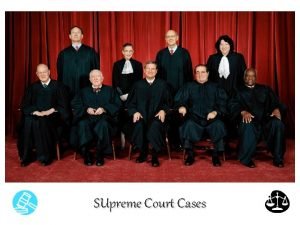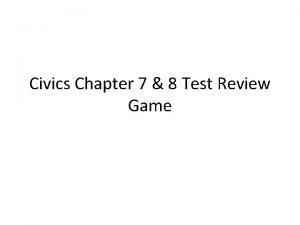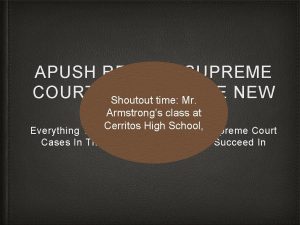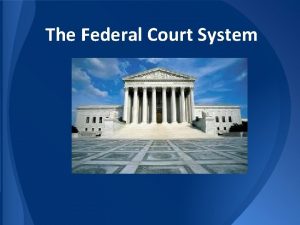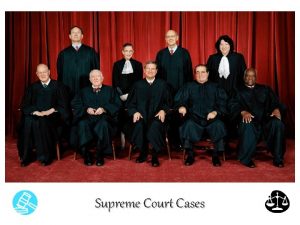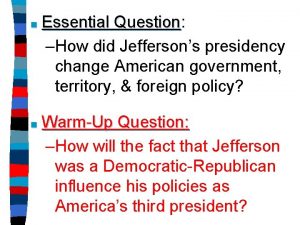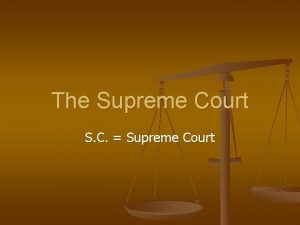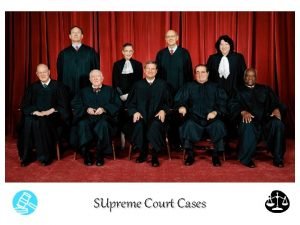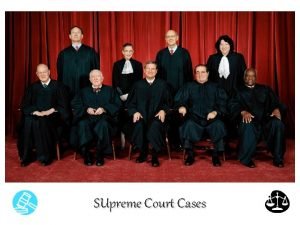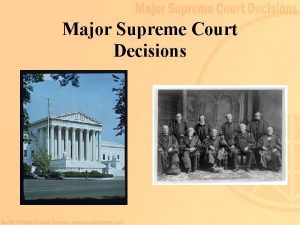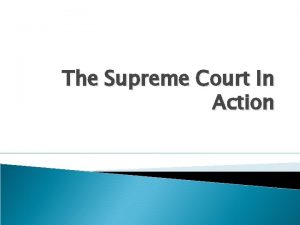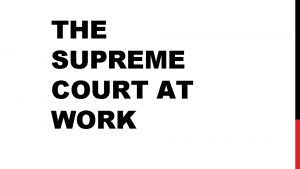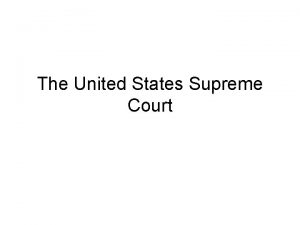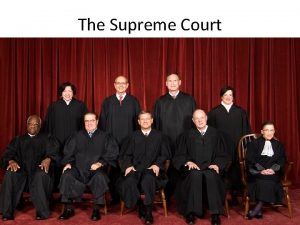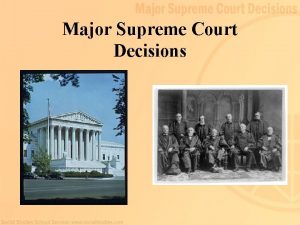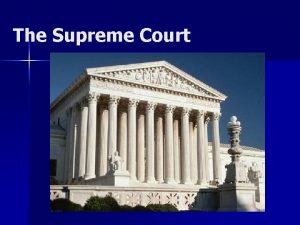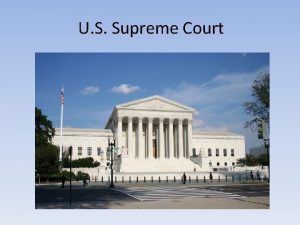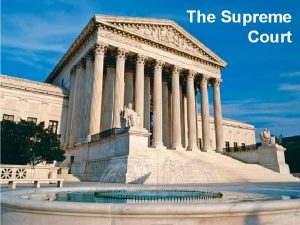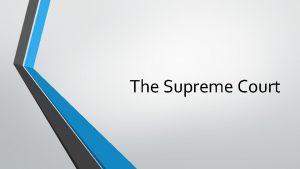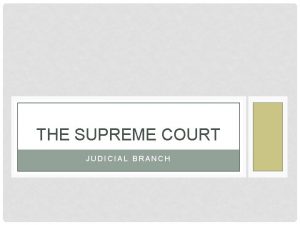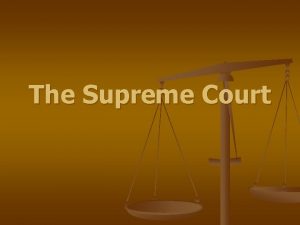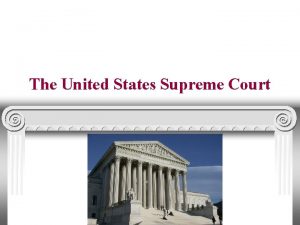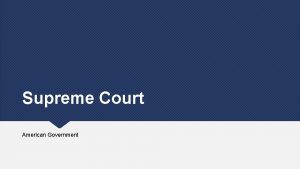The Supreme Court The Supreme Court The Supreme






















- Slides: 22

The Supreme Court

The Supreme Court • The Supreme Court stands at the top of the American legal system. • Article III of the Constitution created the Supreme Court as one of three coequal branches of the national government, along with Congress and the President.

The Supreme Court • The Supreme Court is the court of last resort in all questions of federal law. • The court is not required to hear all cases presented before it, and carefully chooses the cases it will consider. • It has final authority in any case involving the Constitution, acts of Congress, and treaties with other nations. • Most of the cases the Supreme Court hears are appeals from lower courts. • The decisions of the Supreme Court are binding on all lower courts.

The Supreme Court • Nomination to the Supreme Court today is a very high honor. It was not always so. – Several of George Washington’s nominees turned down the job. – Until 1891, justices earned much of their pay while riding the circuit, or traveling to hold court in their assigned regions of the country.

The Supreme Court • Today, the Court hears all its cases in the Supreme Court building in Washington, D. C. , in a large, first-floor courtroom that is open to the public. • Nearby is a conference room where the justices meet privately to decide cases. • The first floor also contains the offices of the justices, their law clerks, and secretaries.

Supreme Court Jurisdiction • The Supreme Court has both original and appellate jurisdiction. • Article III, Section 2, of the Constitution sets the Court’s original jurisdiction. It covers two types of cases: 1. Cases involving representatives of foreign governments 2. Certain cases in which a state is a party • Congress may not expand or curtail the Court’s original jurisdiction.

Supreme Court Jurisdiction • Many original jurisdiction cases have involved two states or a state and the federal government. • When Maryland Virginia argued over oyster fishing rights, and when a dispute broke out between California and Arizona over the control of water from the Colorado River, the Supreme Court had original jurisdiction.

Supreme Court Jurisdiction • The Supreme Court’s original jurisdiction cases form a very small part of its yearly workload – an average of fewer than 5 such cases a year. • Most of the cases the Court decides fall under the Court’s appellate jurisdiction.

Supreme Court Jurisdiction • Under the Supreme Court’s appellate jurisdiction, the Court hears cases that are appealed from lower courts of appeals, or it may hear cases from federal district courts in certain instances where an act of Congress was held unconstitutional.

Supreme Court Jurisdiction • The Supreme Court may also hear cases that are appealed from the highest court of a state, if claims under federal law or the Constitution are involved. – In such cases, however, the Supreme Court has the authority to rule only on the federal issue involved, not on any issues of state law. – A state court, for example, tries a person charged with violating a state law.

Supreme Court Jurisdiction • During the trial, however, the accused claims that the police violated Fourteenth Amendment rights with an illegal search at the time of the arrest. – The defendant may appeal to the Supreme Court on that particular constitutional issue only. – The Supreme Court has no jurisdiction to rule on the state issue (whether the accused actually violated state law). – The Court will decide only whether 14 th Amendment rights were violated.

Supreme Court Justices • The Supreme Court is composed of 9 justices: – The chief justice of the United States – 8 associate justices • Congress sets this number and has the power to change it. – Over the years it has varied from 5 to 10, but it has been 9 since 1869. • Supreme Court Justices make $173, 600/year (Congress sets the salaries of justices)

Supreme Court Justices • Under the Constitution, Congress may remove Supreme Court justices through impeachment for and conviction of : – Treason – Bribery – Other high crimes and misdemeanors • No Supreme Court justice has ever been removed from office through impeachment.

Duties of Justices • The Constitution does not describe the duties of the justices. Instead, the duties have developed from: – Laws – Tradition – As the needs and circumstances of the nation have developed

Duties of Justices • The main duty of the justices is to hear and rule on cases. • This duty involved them in three decisionmaking tasks: – Deciding which cases to hear from among the thousands appealed to the Court each year – Deciding the case itself – Determining an explanation for the decision, called the Court’s opinion.

Duties of Justices • The chief justice has several additional duties such as presiding over sessions and conferences at which the cases are discussed. • The chief justice also carries out a leadership role in the Court’s judicial work and helps administer the federal court system.

Duties of Justices • Justices also oversee one of the 12 federal judicial circuits. – 3 justices have to oversee 2 districts. – The justices are responsible for requests for special legal actions that come from their circuit, so as issuing injunctions for lower court decisions.

Duties of Justices • To maintain their objectivity on the bench, justices are careful not to become involved in outside activities that might prevent them from dealing fairly with one side or the other on a case. • If justices have any personal or business connection with either of the parties in a case, they usually disqualify themselves from participating in that case.

Appointing Justices • Justices reach the court through appointment by the president with Senate approval. – The Senate usually grants such approval, and presidents with strong support in the Senate are less likely to have their candidates rejected, but there is no guarantee. – The Senate even chose to reject one of President Washington’s nominees.

Appointing Justices • As is the case with lower court judges, political considerations often affect a president’s choice of a nominee to the Court. • Usually presidents will choose someone from their own party, sometimes as a reward for faithful service to the party. • But presidents have to be careful to nominate people who are likely to be confirmed by the Senate.

Appointing Justices • Presidents prefer to nominate candidates whose political beliefs they believe are similar to their own. • However, several presidents have discovered that it is very difficult to predict how an individual will rule on sensitive issues once he or she becomes a member of the Court.

The Role of Interest Groups • Interest groups that have a stake in Supreme Court decisions may attempt to influence the selection process. • Generally, these groups make their positions on nominees known through their lobbyists, or agents, and the media. • Strong opposition to a nominee by one or more major interest groups may influence the senators who vote on the nominee.
 Is there a basketball court above the supreme court
Is there a basketball court above the supreme court The supreme court change
The supreme court change How cases reach the supreme court worksheet answers
How cases reach the supreme court worksheet answers Supreme court does
Supreme court does What do these headlines say about how the supreme court
What do these headlines say about how the supreme court Which precedent was established by the supreme court
Which precedent was established by the supreme court Supreme court
Supreme court Jurisdiction of high court
Jurisdiction of high court Warren court apush
Warren court apush Have supreme court
Have supreme court Vocabulary activity 12 supreme court decision making
Vocabulary activity 12 supreme court decision making John marshall
John marshall Supreme court cases graphic organizer answers
Supreme court cases graphic organizer answers The u.s. supreme court works chiefly as a(n)
The u.s. supreme court works chiefly as a(n) Important court cases apush
Important court cases apush Victorian court hierarchy
Victorian court hierarchy Us circuit court map
Us circuit court map Cohens vs virginia apush
Cohens vs virginia apush John marshall supreme court
John marshall supreme court Supreme court does
Supreme court does Supreme court
Supreme court Supreme ordeal definition
Supreme ordeal definition Supreme marketing mix
Supreme marketing mix
